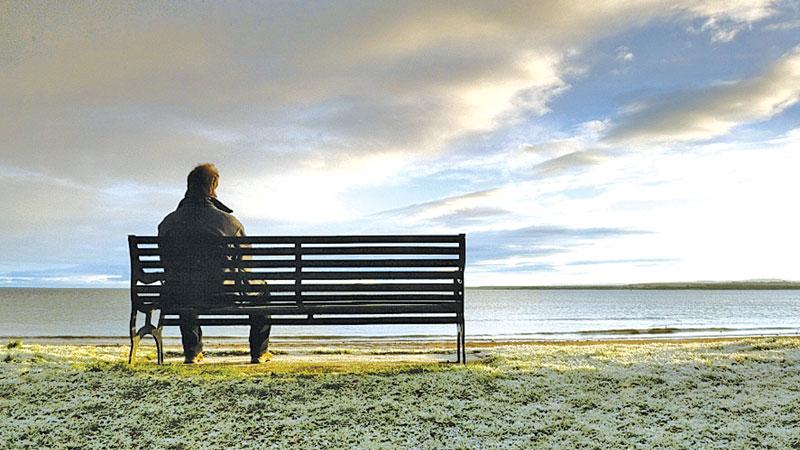
There are more ways than one to connect with others, yet, many of us know the hollow ache of loneliness. Loneliness isn’t constrained by age, gender, marital status or job title. CEOs feel it, so do cubicle dwellers. As do new moms, granddads, recent college grads and elementary school students.
Even royalty isn’t immune. Duchess Kate of Cambridge said in April that she has felt lonely and isolated as a mother. And yes, some of those Facebook friends who continually post photos of bar outings and extended family gatherings may be lonely, too.
The prevalence of loneliness “is surprisingly high,” says John Cacioppo, director of the Center for Cognitive and Social Neuroscience at the University of Chicago, who has studied the topic extensively.
Loneliness can have negative effects on one’s mental and physical health.. As a society, we’ve put increased emphasis on emotional well-being, yet, loneliness remains a major issue. Recently, the U.S. Senate Special Committee on Aging held a hearing on the effect of isolation and loneliness. Sen. Susan Collins, R-Maine, said, ”The consequences of isolation and loneliness are severe - negative health outcomes, higher health care costs and even death.” In 2015, U.S. Surgeon General, Vivek Murthy, one of President Obama’s appointees who was recently asked to step down, pointed out the health dangers that can come from ”isolation, lack of meaning and a loss of self-worth.” What is loneliness, exactly? Most of us have felt it in some form or another. It’s the feeling that arises when there is a gap between social interactions that you want and reality. It is a feeling of being separated, even alienated, and could last for a short stretch or a prolonged period of time. It’s important to note that you can feel lonely “even when you are around other people,” Cacioppo says.
Loneliness is an issue that spans all age groups in one way or another. In a newly released data, U.K.’s National Society for the Prevention of Cruelty to Children says, in the past year, it counselled nearly 4,100 children and teens who grappled with loneliness. Some who needed help were as young as 6.
“I’ve thought about ending my life because I think it’s pointless me being here,” said one anonymous 15-year-old in a transcript provided by the NSPCC. “I don’t feel like anyone cares about me, and I’m lonely all the time.”
A 16-year-old said, “I don’t feel like I fit in anywhere, and I have no friends. I hate being this unhappy, but I can’t control it. I feel so alone. Whenever I think about the future, I get scared that I’ll always be by myself because I’m not good-looking or funny enough.”
That scary future of loneliness is a reality for many older adults. Almost half of Americans aged 62 and above experience some degree of loneliness, according to a new AARP Foundation survey. Two in 10 say their loneliness is frequent.
How we talk to each other at work and at play isn’t helping
Our workload and work style can contribute to feelings of loneliness, says Jennifer Caudle, an osteopathic family physician and assistant professor at Rowan University School of Osteopathic Medicine. Many of us pull long days, and after we leave, we check emails, read reports and review presentations, rather than fully connect with friends and family. Nearly half of U.S. workers check emails after they leave work, and 45% work during non-business hours, according to a CareerBuilder survey in 2016.
“Work does not stop anymore, it is always there for us,” says Caudle, who notes that those working remotely from others can also feel isolated.
On days when she doesn’t interact with students or patients, Caudle says she can feel it. “I can go all day and not communicate with a person directly,” she says. ”I‘m on my computer all day long, and sometimes at the end of the day, even though I’ve been productive, I feel a little empty.”
Technology and social media can play a part. We are increasingly adopting digital devices, and social media use has skyrocketed. Though these tools can be helpful, digital communication often lacks the connection-building nuances that come with face-to-face interactions, says University of Chicago’s Cacioppo.
“You don’t see their facial expressions,” he says. “You don’t hear their tone of voice.” Even with Skype and FaceTime, “there are so many missing cues,” Cacioppo says.
We can be our own worst enemy
Risk factors for perceived or actual social isolation include living alone, being unmarried and having few friends, says Brigham Young University psychology and neuroscience professor Julianne Holt-Lunstad.
Other factors include chronic health conditions and mobility impairments. Lonely people can automatically put up their guard, which in turn can make it difficult to establish those longed-for connections, Cacioppo says. “When you feel isolated, you feel as if there is no one who you can trust,” he says. “The brain goes into a self-preservation mode.”
The stigma that can come with admitting to loneliness means that we sometimes struggle silently. “Nobody wants to say, ‘Hey, I’m lonely,’” says Charlotte Yeh, chief medical officer of AARP Services. If a lonely person does find a helpful resource, he or she isn’t likely to share it with others who could use it, she says, since that would mean admitting to feeling lonely in the first place.
Feeling lonely? Do these things
Pick up the phone and call someone. Go outside and take a walk. Spend more time interacting with others in person vs. on social media.
There is no one answer — it can be complicated to address loneliness — but some small, proactive steps can help you feel better. If you feel your loneliness is severe and negatively impacting your mental health, there are places to go:
USA TODAY
